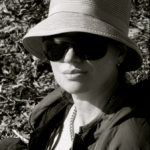Favorite machine feet for making clothing?
-
15 years ago LINK
mrsc1345 @mrsc1345
Awesome! Thanks guys, such great ideas. I had totally forgotten I was wanting to get a plate with inch markings, that will definately be purchased today!
15 years ago LINK Nicole
@motherof5
Nicole
@motherof5
Thanks Maraya , I wondered about that. Just at the moment I do not have the time to sit and teach my self how to use it well.
Definitely a one day purchase though !
15 years ago LINKToyota888 @Toyota888
I would absolutely vote for the walking foot too! I too asked for it for Xmas and it takes nothing to learn how to use even though it looks really strange. There is no way I could have sewn the School Days raincoats without it and now I am using it for most straight stitching I do. It’s like The Little Red Engine That Could – it gets over everything! I am very interested in what a top stitching foot does better than the standard foot – how does having the built up bit work??
15 years ago LINKbadskirt @badskirt
I did a blog post today about my edgestitching foot in response to a few emails that I received during the ice cream social. It’s very practical beyond topstitching.
http://badskirt.blogspot.com/2010/07/edgestitch-foot-demystified.html
15 years ago LINKLizabeth @Lizabeth
Thank you, badskirt (Amy), for the edgestich posting…great pictures!
Toyota888, to answer about the topstitch foot, the built up bit under the foot makes the foot ride evenly over different layers of fabric (the built up bit is either on the right side like with the blind stitch foot–foot ‘d’ for many vikings–or the left side for the left edge topstitch foot).
If you look at badskirt’s photos for the section where the seam allowances are pressed to one side (ie towards the bodice), you would have three layers of fabric stacked together opposite to only one layer (ie the skirt). a topstitch foot could be chosen so that the built up bit of the foot runs on the one layer of fabric (ie the skirt) and the thinner bit under the foot runs on the multiple layers (ie bodice and seam allowance). this allows your edgestiching to form evenly as there is no shifting or ‘wonkiness’–a foot without a builtup bit underneath would tip towards the one layer of fabric (since the side with three layers is a higher stack of fabric).
However, what badskirt has labled as ‘stitch in the ditch’ is in fact, not. Yes, the center flange of the foot is riding in the ditch, but the stiches are being placed on the edge of the fabric just to the side of the ditch; so it is rather, edgestiching.
True stitch in the ditch is as it says, stitching in the ditch of the seam exactly. this can be done for an invisible waistband or facing tackdown etc.
15 years ago LINKbadskirt @badskirt
Maybe I should edit my post, if it’s unclear. Hrmm. I’ll take a look.
I meant that in addition to stitching on the edge. You can also use the blade and stitch truly down the center. That’s what the paragraph at the end of that section was supposed to imply.
That said, I was told sewing exactly down the center can weaken your seams since you are sewing through your thread and may not have the support of the fabric. Has anyone else heard of this problem?
Happy to admit that I’m not an expert.
15 years ago LINKToyota888 @Toyota888
This is all very interesting!! I have a newish very basic Janome top loading bobbin type – I see there is a “stitch in the ditch foot” sold online for this type but can’t see anything for edge stitching or top stitching – the ditch foot has a metal guide down the middle like Amy’s foot so maybe that is the same – it might not be built up on one side tho because it would be made to go over even thicknesses of quilt top. I am very attracted to the idea of perfect top stitching!!!
You must be logged in to reply to this topic.
copyright
Unless otherwise credited, all work on this blog is © Liesl + Co., Inc, 2008-2025. You are welcome to link to this blog, but please ask permission before using any text or images.